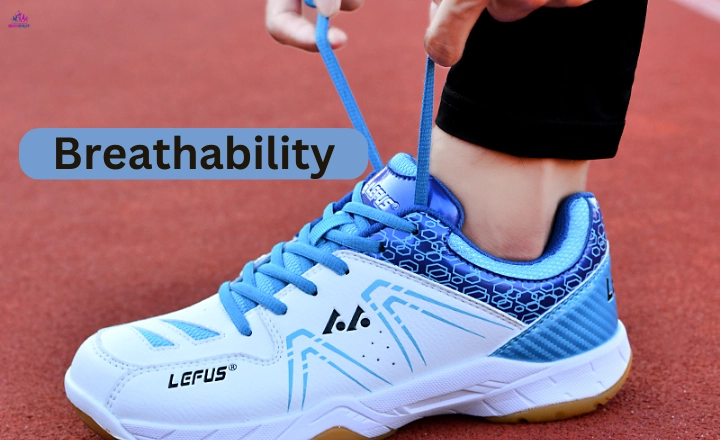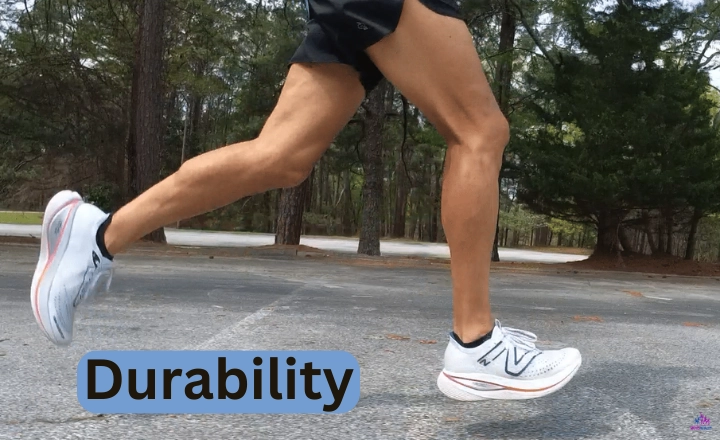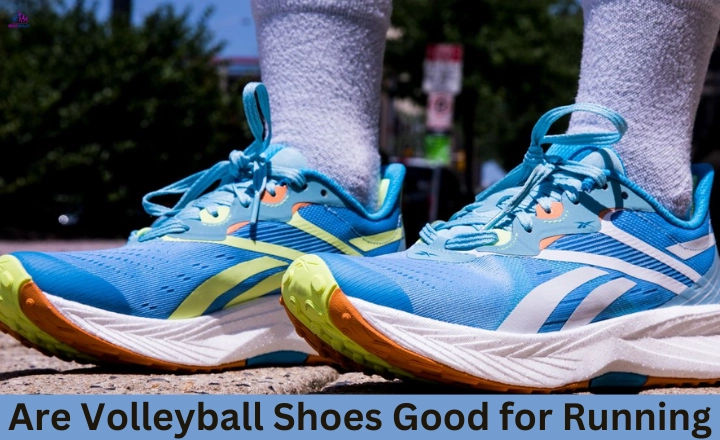With the ever-growing popularity of both volleyball and running, athletes are often faced with the question: Are volleyball shoes good for running? While these two sports may seem similar regarding physical demands and footwork, the answer is more complex than one might think.
We will delve into the specific characteristics of volleyball shoes and what they offer in support, cushioning, and traction to determine whether they can truly meet the needs of a runner.
So lace up your shoes and get ready to explore whether your favorite volleyball kicks can double as reliable running companions! So many want to know and ask this question: Are volleyball shoes good for running? Volleyball shoes are not ideal for running as they’re specifically designed for high-impact movements (like jumping and change of direction) on indoor courts instead of outdoor use.
The 5 Main Differences Between Running Shoes & Volleyball Shoes
Running shoes and these shoes may seem similar at first glance, but they are designed for very different purposes.
Here are the five main differences between these two types of footwear:
1. Breathability

Volleyball shoes may be suitable for a quick run, but they often lack the breathability of running shoes. Running shoes typically feature mesh or lightweight materials that allow air to flow freely, keeping your feet cool and dry during a long run.
Volleyball shoes prioritize support and stability over breathability, as players require extra reinforcement when making sudden lateral movements on the court. It can make them less ideal for long-distance running where ventilation is crucial.
Breathability is essential for runners as it helps regulate temperature and reduce sweat accumulation in the shoe. When your feet are hot and sweaty, there is an increased risk of blisters and discomfort.
Poor air circulation can also lead to bacterial growth, causing unpleasant odors. Investing in breathable running shoes enhances comfort and promotes better foot health during intense workouts.
Volleyball shoes may temporarily substitute running footwear in certain situations. Their lack of breathability can pose challenges for extended runs.
Dedicated running shoes are designed with mesh uppers and ventilation systems that allow airflow throughout the shoe – ensuring your feet stay cool and dry no matter how far you go.
2. Outsole Design & Traction
These shoes provide cushioning and support to the feet, but they differ significantly in outsole design and traction. The outsoles are often designed with grooves and patterns that provide grip on various surfaces, such as pavement or trails. The traction is essential for runners to maintain stability and prevent slipping during their runs.
Volleyball shoe outsoles are engineered explicitly for indoor court surfaces. These outsoles have a sticky rubber compound that helps players grip the court efficiently while making quick lateral movements.
While volleyball shoes may offer decent traction on smooth outdoor surfaces, they need deeper grooves in running shoe outsoles that make them less suitable for off-road or trail running.
Both volleyball and running shoes provide necessary cushioning and support, but their designs must be more consistent in outsole design and traction.
Volleyball shoes excel at providing excellent grip on indoor courts while supporting fast-paced lateral movements every day in the sport. Running shoe outsoles offer specific patterns that enhance traction on various terrains encountered during runs outdoors.
Choosing footwear tailored to your preferred activity is best to enhance performance and reduce the risk of injury.
3. Forefoot Flexion
Forefoot flexion is essential in running shoes as it allows for more significant movement and flexibility during each stride. The deeper flex grooves on the outsoles of running shoes enhance this forefoot flexion, making them an excellent choice for runners.
This increased flexibility enables the foot to bend and move naturally, improving overall performance and reducing the risk of injuries.
It’s important to note that not all shoes are designed with equal forefoot flexion capabilities. While running shoes prioritize this aspect, other types of footwear, like volleyball shoes, offer different flexibility.
Volleyball shoes are designed to provide stability and support for lateral movements rather than the extensive forefoot flexion required in running. While they can be suitable for short distances or occasional runs, they may not be ideal for longer runs or high-intensity training sessions where a higher level of forefoot flexion is necessary.
If you’re considering using volleyball shoes for running, assessing whether they can provide adequate forefoot flexion is crucial. Running-specific footwear typically has design elements such as deep flex grooves that optimize this essential movement feature.
Choosing the right pair of running shoes will enhance your performance on the track and help prevent potential foot injuries caused by limited forefoot flexion.
So next time you lace up your sneakers for a run, pay attention to those deep grooves they might just take your training to a whole new level.
4. Weight
While volleyball shoes are specifically designed to optimize performance on the court, there may be better options for running. One key difference between these two types of shoes is their weight.
Running shoes often weigh considerably less than volleyball shoes, too. A shoe’s weight is crucial when it comes to running, as it affects both speed and agility.
The lighter weight of running shoes allows for a more effortless stride and reduces fatigue during long-distance runs. Volleyball shoes tend to be heavier due to their support and cushioning needed for sudden lateral movements on the court.
This extra weight can hinder your ability to run efficiently and comfortably, potentially leading to discomfort or injuries if used extensively.
Lightweight running shoes offer enhanced breathability and flexibility compared to volleyball shoes, usually constructed with thicker materials to protect against impact during jumps and quick changes in direction on the court.
This durability-oriented design may restrict airflow around your feet while running and limit natural foot movement. Running shoe designs prioritize ventilation through mesh panels while providing optimal support without compromising mobility.
Although volleyball shoes may serve well in their intended sport, they might not be suitable for regular or prolonged running activities due to their heavier build and lack of features specific to efficient forward motion.
Investing in a good pair of lightweight running shoes will significantly optimize your performance on the track or trail while reducing the risk of discomfort or injuries from using unsuitable footwear for this activity.
5. Durability
Volleyball shoes are often overshadowed by running shoes. The carbon rubber outsole of a running shoe is specifically designed for outdoor use on various surfaces that are less forgiving than an indoor court. It means that running shoes are built to withstand the wear and tear of different terrains, making them more durable in the long run.
Many running shoe models now feature reinforced toe caps and heel counters to provide extra protection and prevent premature wearing.

The upper construction of running shoes also contributes to their durability. Modern designs incorporate advanced materials such as mesh or synthetic overlays that offer breathability and structural integrity.
These features increase the shoe’s lifespan but also help improve overall performance by providing a secure fit and better support during runs.
While volleyball shoes deliver traction and stability within an indoor setting, they may need help matching the durability of dedicated running shoes for outdoor usage.
Investing in durable running shoes is highly beneficial if you aim to hit the trails or explore different terrains during your runs.
Why You Should Avoid Wearing Volleyball Shoes For Running
There are two main reasons why Volleyball Shoes are not suitable for running…..
You’ll Have Poor Running Performance
Are volleyball shoes good for running? The simple answer is no. While these shoes may provide excellent stability and support on the court, they are not designed for the same type of movement as running shoes. One major drawback is their weight and clunky design.
Volleyball shoes tend to be heavier compared to lightweight running shoes. This added weight can negatively impact your performance by making you less efficient when running.
Running requires certain agility and quick movements, which can be hindered by heavy, bulky footwear like volleyball shoes. Every extra ounce matters when running it’s all about speed and efficiency. Imagine sprinting with weights strapped to your ankles you’ll feel sluggish and tire out faster than if you wore proper running shoes.
The design of volleyball shoes focuses on lateral movements rather than forward propulsion. They often have thick soles with rigid support systems that restrict your foot’s natural flexion and extension while running. This lack of flexibility can unnecessarily strain your joints, leading to discomfort or injury.
Volleyball shoes excel in their specific sport domain and just need to cut regarding running performance. Opting for lightweight and cushioned running shoes designed specifically for this activity will greatly enhance your efficiency and enjoyment during runs.
Your Volleyball Shoes Will Get Wrecked
Volleyball shoes are specifically engineered to meet the demands of the sport – quick lateral movements, stability, and grip. They feature gum rubber outsoles that provide excellent traction on indoor courts.
These same characteristics could be detrimental when used for running. The high traction and stability that make volleyball shoes great for playing on hard surfaces can increase strain on joints and muscles during runs.
It’s worth noting that some athletes do use their volleyball shoes for running due to their lightweight construction and cushioning properties.
It is essential to understand that these shoes are designed with a different emphasis on forward movement and impact absorption than traditional running shoes. If you plan to incorporate both activities into your training regimen, investing in a pair of dedicated running shoes would be wise.
Can You Use Volleyball Shoes For Working Out?
Volleyball shoes are designed to provide stability, support, and responsiveness on the volleyball court.
They typically have features like gum rubber soles for excellent traction and cushioning systems that enhance shock absorption during jumps. When using volleyball shoes for running or other workouts outside the court, it’s crucial to consider their limitations.
Volleyball shoes lack the same level of cushioning and support as dedicated running or athletic shoes. While they may provide adequate comfort for short runs or light cardio exercises in the gym, wearing them for longer distances or high-impact activities can lead to discomfort or injury due to insufficient shock absorption.
These shoes are generally heavier than traditional running sneakers, impacting your overall performance during more intense workout sessions.
If you’re only engaging in general fitness activities at the gym – think weightlifting, circuit training, or low-intensity cardio – volleyball shoes may still be a suitable option.
Their solid construction and lateral support can help maintain stability during lateral movements such as lunges or side planks.
If your workouts involve extensive running or require maximum cushioning and flexibility for activities like HIIT (High-Intensity Interval Training), investing in proper running or cross-training footwear would be a wiser choice.
Fina Lines About Are Volleyball Shoes Good for Running…
A frequently asked question among volleyball players is whether it is suitable to run in their volleyball shoes. While some argue that volleyball shoes are designed specifically for the indoor surface and may not provide adequate support for running, others believe they can be just as effective.
The truth lies in your personal preferences and needs. If you prefer lightweight shoes with excellent stability, using your shoes for running might be a good option. Remember that running on hard surfaces like pavement or concrete can cause increased wear and tear on the soles of your shoes.
It all boils down to how you feel when you run in your shoes. If you experience discomfort or notice decreased performance, investing in a pair of dedicated running shoes may be worth it.
Your comfort and performance should guide your decision whether to lace up those trusty old volleyball kicks or opt for something designed specifically for running.
FAQ’s
Are there any risks associated with using the wrong type of footwear for running?
Wearing improper footwear while running can increase the risk of shin splints, plantar fasciitis, stress fractures, and ankle sprains.
Where can I find reliable information about choosing the right type of footwear for my physical activities?
You can consult with specialized sports stores or seek advice from podiatrists or athletic trainers who can guide you in selecting appropriate footwear based on your specific needs and activities.

